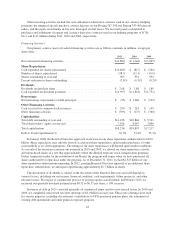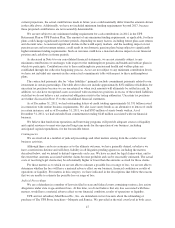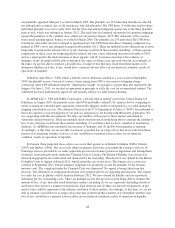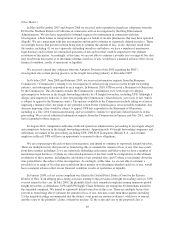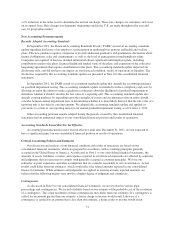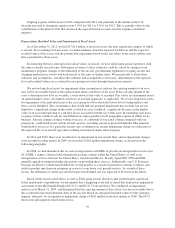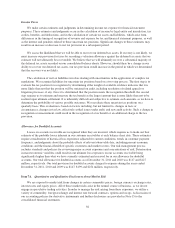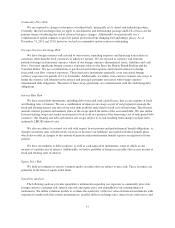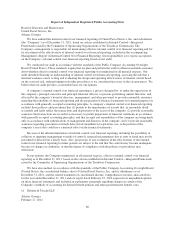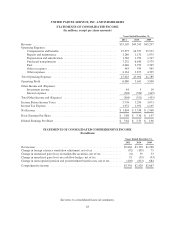UPS 2011 Annual Report Download - page 65
Download and view the complete annual report
Please find page 65 of the 2011 UPS annual report below. You can navigate through the pages in the report by either clicking on the pages listed below, or by using the keyword search tool below to find specific information within the annual report.Licenses with a carrying value of $5 million as of December 31, 2011 are deemed to be indefinite-lived
intangibles, and therefore are not amortized. Impairment tests for indefinite-lived intangibles are performed on an
annual basis. All of our remaining recorded intangible assets are deemed to be finite-lived intangibles, and are
thus amortized over their estimated useful lives. Impairment tests for these intangible assets are only performed
when a triggering event occurs that indicates that the carrying value of the intangible may not be recoverable
based on the undiscounted future cash flows of the intangible. If the carrying amount of the intangible is
determined not to be recoverable, a write-down to fair value is recorded. Fair values are determined based on a
DCF model. No impairments of indefinite-lived or finite-lived intangible assets were recognized in 2011, 2010 or
2009.
Self-Insurance Accruals
We self-insure costs associated with workers’ compensation claims, automotive liability, health and welfare
and general business liabilities, up to certain limits. Insurance reserves are established for estimates of the loss
that we will ultimately incur on reported claims, as well as estimates of claims that have been incurred but not yet
reported. Recorded balances are based on reserve levels, which incorporate historical loss experience and
judgments about the present and expected levels of cost per claim. Trends in actual experience are a significant
factor in the determination of such reserves. We believe our estimated reserves for such claims are adequate, but
actual experience in claim frequency and/or severity could materially differ from our estimates and affect our
results of operations.
Workers’ compensation, automobile liability and general liability insurance claims may take several years to
completely settle. Consequently, actuarial estimates are required to project the ultimate cost that will be incurred
to fully resolve the claims. A number of factors can affect the actual cost of a claim, including the length of time
the claim remains open, trends in health care costs and the results of related litigation. Furthermore, claims may
emerge in future years for events that occurred in a prior year at a rate that differs from previous actuarial
projections. Changes in state legislation with respect to workers compensation can affect the adequacy of our
self-insurance accruals. All of these factors can result in revisions to prior actuarial projections and produce a
material difference between estimated and actual operating results.
We sponsor a number of health and welfare insurance plans for our employees. These liabilities and related
expenses are based on estimates of the number of employees and eligible dependents covered under the plans,
anticipated medical usage by participants and overall trends in medical costs and inflation. Actual results may
differ from these estimates and, therefore, produce a material difference between estimated and actual operating
results.
Fair Value Measurements
In the normal course of business, we hold and issue financial instruments that contain elements of market
risk, including derivatives, marketable securities, finance receivables, other investments and debt. Certain of
these financial instruments are required to be recorded at fair value, principally derivatives, marketable securities,
pension assets and certain other investments. Fair values are based on listed market prices, when such prices are
available. To the extent that listed market prices are not available, fair value is determined based on other
relevant factors, including dealer price quotations. Certain financial instruments, including over-the-counter
derivative instruments, are valued using pricing models that consider, among other factors, contractual and
market prices, correlations, time value, credit spreads and yield curve volatility factors. Changes in the fixed
income, equity, foreign exchange and commodity markets will impact our estimates of fair value in the future,
potentially affecting our results of operations. A quantitative sensitivity analysis of our exposure to changes in
commodity prices, foreign currency exchange rates, interest rates and equity prices is presented in the “Market
Risk” section of this report.
53



